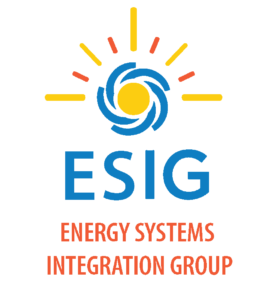
- This event has passed.
Webinar: EMT Modeling and Simulation – Who Needs an EMT Model for Doing Stability Studies?
May 24, 2022 @ 4:00 pm - 5:00 pm EDT
Featured Speaker: Babak Badrzadeh, Technical Director, Power Systems, Aurecon

About the Webinar: Power systems around the world are transitioning to significantly higher shares of inverter-based resources (IBR) with few synchronous generators remaining online. IBR and synchronous generators have fundamentally different dynamic performance characteristics. System dynamics and technical needs are therefore vastly different between synchronous and IBR dominated power systems, and these differences will become greater as IBR uptake increases in the power system. Several practical experiences exist where conventional power system stability analysis tools, referred to as phasor-domain transients, have been unable to predict these phenomena due to the simplifications inherent to these tools.
More detailed whole-system modelling based on electromagnetic transient (EMT) models has been increasingly used in recent times in particular in countries/regions with higher IBR penetration to address the problems discussed above. This will facilitate accurate long-term power system planning allowing the resolution of new and emerging phenomena before they manifest in real power system operation. It will also permit a more accurate albeit more involved assessment of the impact of connecting new IBRs such as battery energy storage systems, hydrogen electrolyser, solar and wind generation on power system planning and operation. This detailed modelling will also facilitate better understanding of the performance of emerging technologies such as grid-forming inverters and how best they can be designed to meet emerging power system needs and technical requirements in power systems with significantly higher IBR penetration.
This webinar focuses on why, when, where and who questions as far as wide-area EMT modelling is concerned. A brief discussion on the how question will also be presented.
About the Speaker: Babak Badrzadeh holds BSc, MSc and PhD all in the area of electrical power systems. Prior to joining Aurecon in March 2021, he was with AEMO as the Manager of Operational Analysis and Engineering team. He is currently the Technical Director, Power Systems with Aurecon, and an Adjunct Professor with Monash University. His focus area is power system modelling and analysis, including the impact of grid-connected and distributed inverter-based resources from operational, connections and planning perspectives. He has played a key role in the worldwide establishment of wide-area electromagnetic transient (EMT) modelling, and the overarching area of system strength. Babak is currently the Convener of CIGRE Working Groups B4.83, C2.26 and C4.56, a member of CIGRE SC C2 Strategic Advisory Committee. In January 2021 Babak was appointed as a Distinguished Lecturer by IEEE Power and Energy Society (PES). He is also a recipient of 2019 ESIG Engineering excellence award. In March 2021 Babak was appointed as the chief editor of CIGRE Green Book on ‘’Power system dynamic modelling and analysis in evolving networks’’.
Moderator: Charlie Smith, Executive Director, ESIG
Registration Cost: FREE
Q&A Session: We will be using the slido platform for Q&A. Please submit your questions and follow-along during the event at this link.

